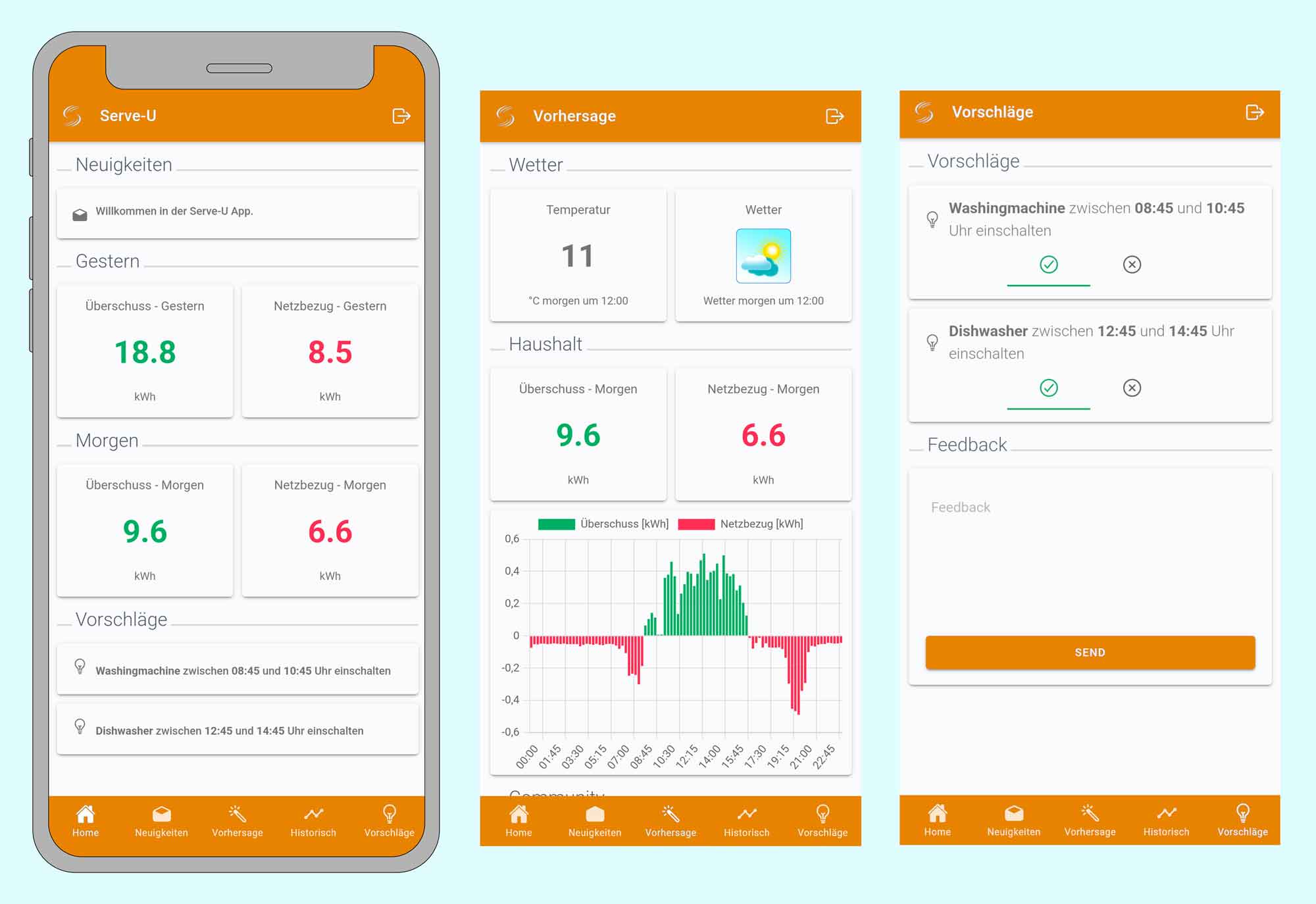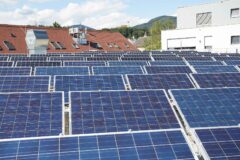In this project, under the management of the University of Applied Sciences Upper Austria1, a digital optimisation platform for energy use is being developed where future energy communities will be able to flexibly control the use of renewable energy carriers in a demand-optimised manner, without too much technical effort or expense. The energy optimisation model serve-U will integrate high-resolution meteorological generation estimates, exchange-based price data and self-learning consumption forecasts. With a view to the specific requirements of the users, the economic and ecological potential of such low-cost optimisation approaches for energy communities is also examined.
Monitoring and improving the data quality
With the increasing number of energy communities and the ongoing digitalisation of the energy system, the amount of data that is transmitted, analysed and processed is growing. In order for an energy community to function properly, it is necessary to precisely measure the data flow on electricity generation and consumption and to bill it correctly. Data are also the basis for decisions such as which energy carrier should ideally be used at what time of day in the energy community. A high quality of the underlying data is essential for optimal operation. Poor data quality can lead to incorrect assessments and thus to high follow-up costs. A central topic in the serve-U project is the evaluation and improvement of data quality. The project partner SCCH (Software Competence Center Hagenberg) has been researching methods for evaluating data quality for several years. In the course of this, two software tools were developed, which are now being adapted specifically for the energy domain. For data management, first the requirements for the server infrastructure, database and interfaces were specified. Then it was defined which data need to be included on the service platform and in what form – as raw data or data already checked for quality. Factors taken into account include weather forecasts for the respective location, energy procurement from the in-house PV system, the energy community or the grid, data on energy consumption and the delivery of energy to the energy community, a storage system or the public power grid.
Forecasting & optimisation for energy communities
In actual implementation, the data model will become even more complex and integrate various influencing factors for all energy flows as well as the forecasted future energy consumption. The project partners are developing different forecasting tools for the generation, consumption and optimisation of energy flows in energy communities, which are compared, combined and further developed. The most important parameters for energy generation are the forecasts of solar radiation (global radiation), which form the basis for forecasting the amount of electricity that will be generated with photovoltaics. Energy communities also own shares in wind and hydropower plants. Therefore, wind power and hydropower forecasts are also included in the model.
Active users
The aim is to develop a service tool that does not require any additional hardware components (electricity meter, home automation, etc.). This will enable low-threshold entry for participants and operators of energy communities. The users are addressed directly via digital interfaces (smartphone, tablet, PC, etc.) and encouraged to take active action, i.e. to control and optimise energy generation and consumption in their energy community. In the course of the project, various actions that users can take as well as any necessary restrictions will be developed together with the future users and adapted to their needs. The accompanying socio-technological research plays an important role in the serve-U project, the findings of which are incorporated.
Simulations and tests in a real environment
The overall concept will first be implemented in a simulation environment, next it will be implemented in a real test environment where it will then be examined in a test operation lasting several months. The test phase will provide information about the actual load shifting potentials in energy communities and how the participants behave. In addition, the project team wants to test and analyse different business models and incentives for users to actively participate in this phase.
serve-u.at
1Project partners: University of Applied Sciences Upper Austria (project management), ATB-Becker, BLUESKY Wetteranalysen, Energy Institute at the Johannes Kepler University Linz, University of Applied Sciences Technikum Wien, Innsbrucker Kommunalbetriebe, OurPower Energiegenossenschaft, Software Competence Center Hagenberg GmbH, Sonnenplatz Großschönau, Vendevio



